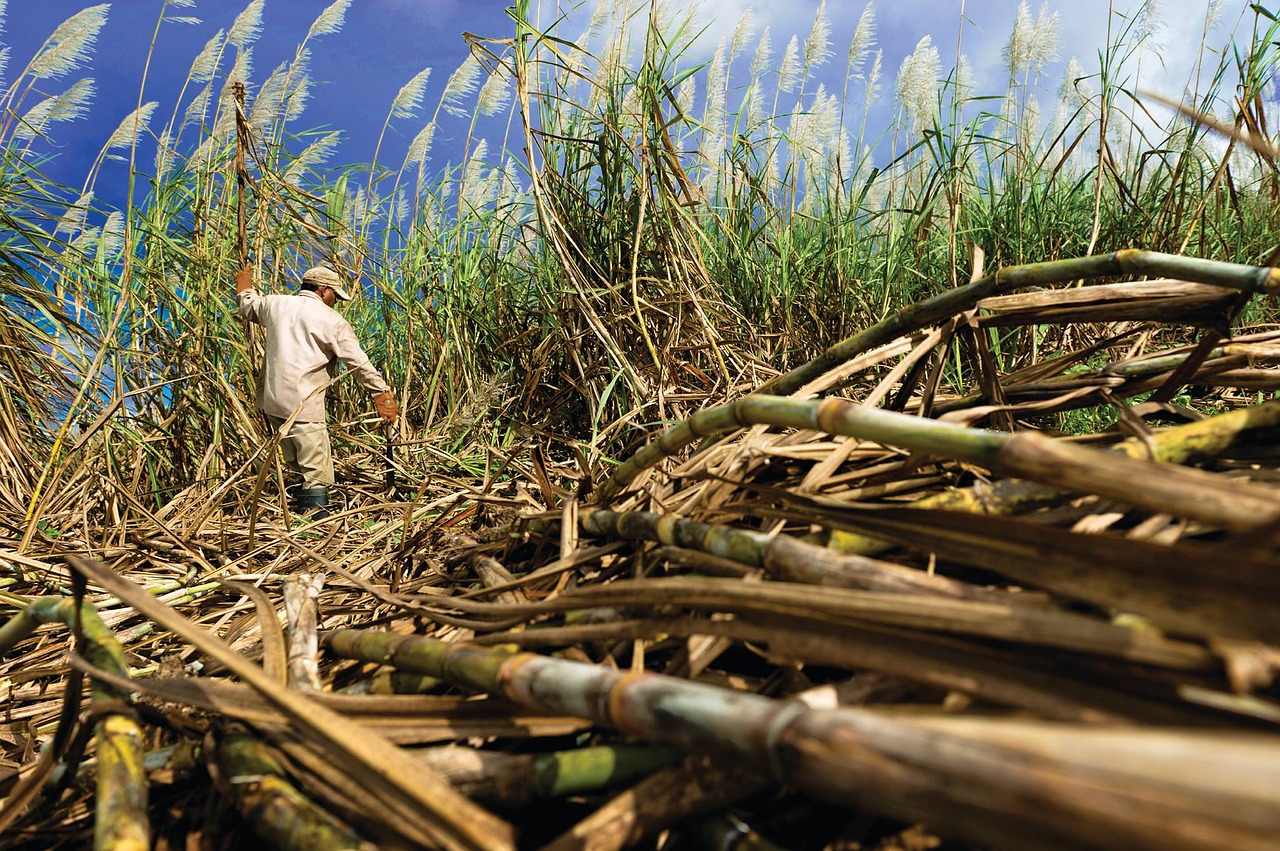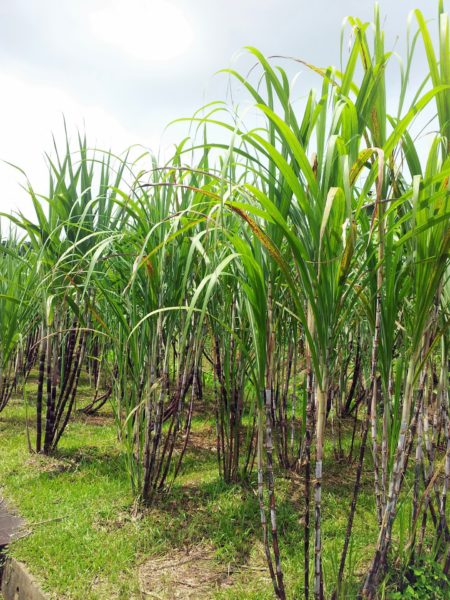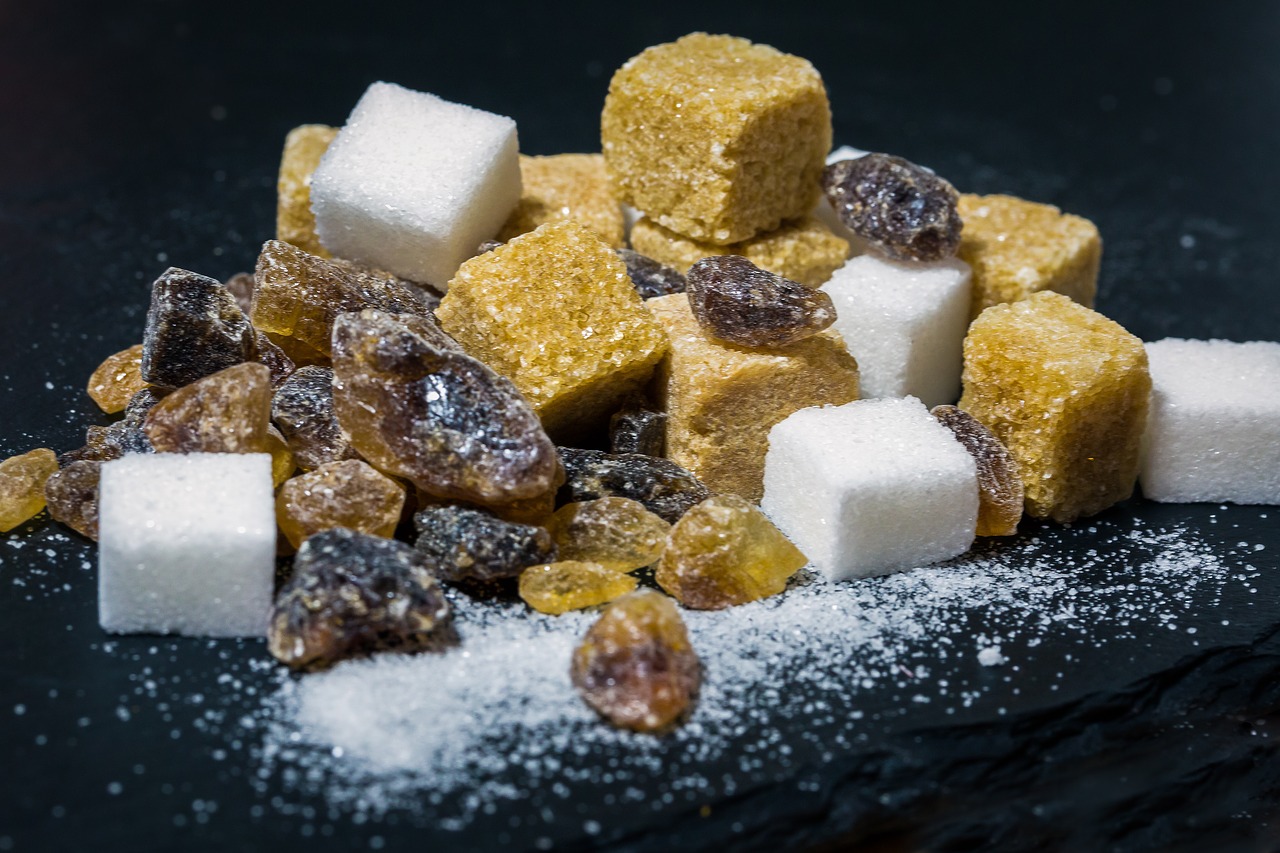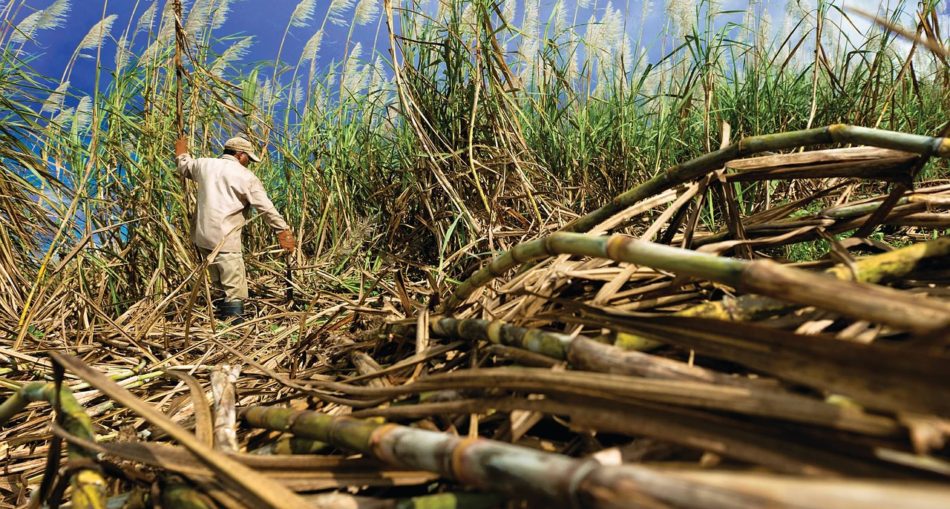Growing up in the countryside it is inevitable for you to come across this sweet, juicy, sugary stem known as sugarcane. Guyana is the biggest sugarcane producer in the Caribbean. Proof of this can be found all over the Low Coastal Plain of Guyana in the form of large sugar estates like Uitvlugt, and Diamond and the now-defunct Wales Estate. After slavery was abolished, planters needed a new labour force and brought people from Asia for this purpose. Indian and Chinese indentured labourers brought to Guyana worked on cane fields, planting and harvesting sugarcane. This plant has grown to become one of Guyana’s main export. Other names for sugarcane are Cebus and ‘tebuh’ in Asia, however, it is widely known as cane or sugar cane. The scientific name for sugarcane is Saccharum officinarum and it is not only used to make sugar. Sugarcane can be enjoyed right after harvesting, peeled, sliced and chewed raw or made into the famous ‘cane juice.’

Cane cutting – Image source: https://www.needpix.com/photo/download/1088614/cane-sugar-field-free-pictures-free-photos-free-images-royalty-free-free-illustrations
Origin
Sugarcane originated from the island of New Guinea, from which it spread westwards to Southeast Asia after contact with Austronesians. Saccharum officinarum spread north and west to Eurasia and the Mediterranean. Some countries that produce sugarcane are Brazil, India, China, Guyana, Mexico and Malaysia.
Interesting Tip
- Sugarcane was first grown as feed for domesticated pigs.
- Austronesians are people from Taiwan, the Malay Peninsula, Island Southeast Asia, Micronesia, coastal New Guinea, Island Melanesia, Polynesia, and Madagascar.
- Eurasia the largest continental area consisting of Asia and Europe.
- Brazil is the largest sugarcane producer in the world.
Scientific Classification Of Sugarcane

A field of sugarcane – Image Source: https://www.needpix.com/photo/download/1354601/sugar-cane-plant-field-sugar-cane-plant-field-free-pictures-free-photos-free-images-royalty-free
- Kingdom: Plantae
- Clade: Tracheophytes
- Clade: Angiosperms
- Clade: Monocots
- Clade: Commelinids
- Order: Poales
- Family: Poaceae
- Genus: Saccharum
- Species: S. officinarum
Description of Sugarcane
Saccharum officinarum is a tall, perennial grass that is grown for the sucrose it produces, which is used to make sugar. The sugarcane plant has thick stems, ribbed with nodes. Each stem is about three (3) to four (4) metres tall with a width of about two (2) inches. The leaves of a sugarcane plant resemble a blade, and are thick at the center, rather than margins and surround the stem. The inflorescence of Saccharum officinarum has two spikelets and seeds which are covered in silky hair and protected by husks. One sterile flower and another bisexual flower is produced on the inflorescence.
Nutritional Value
The average teaspoon of raw sugarcane contains about four (4) grams of carbohydrates, iron, magnesium, a large amount of vitamin C, vitamin B2, potassium and phosphorus and four (4) grams of glucose, a healthy form of sugar.
Interesting tip
- The node is a part of a plant stem from which one or more leaves emerge, often forming a slight swelling.
- Raw sugarcane is free from fats, cholesterol, proteins and sodium.
Health Benefits of Sugarcane
- Energy – When consumed in the form of sugarcane juice, glucose is converted to glycogen which the body stores as an energy reserve. Sugarcane also provides instant energy and refreshment.
- Prevention of illness – Raw sugarcane is good for people with dehydration and for evading illnesses like the common cold, flu and sore throat. Using raw sugarcane can even fight breast cancer and prostate cancer.
- Health Boost – Raw sugarcane improves functions of various other organs like the brain, eyes, kidney, stomach, heart, and the reproductive system.
Culinary Uses of Sugarcane
- Solid pieces of sucrose obtained from the boiling and evaporation of sugarcane juice is a food staple in Colombia and other countries in South and Central America.
- Raw sugarcane is chewed to extract the juice.
- Jaggery (solidified molasses) is used to sweeten entrees, desserts and sweets.
- Sugarcane produces a combination of fresh juice, extracted by hand or small mills.
- Rum is also made from sugarcane products in the Caribbean.
- In Latin American countries, a sweet flour is one of the simplest refinings made from the sugarcane juice.

Sugar granules – Image Source: https://www.hulagirlfoods.com/organic-sugar-cane-benefits/health-benefits-of-raw-sugar-cane/
Other Uses
- The sugarcane plant is mainly grown for the production of cane sugar, also known as sucrose.
- Bagasse which is the residual dry fibre of the cane after cane juice has been extracted is produced. It has several uses including uses as agricultural mulch, fuel for the boilers and kilns, the production of paper, paperboard products. It is also a raw material needed for the production of chemicals.
- Another by-product of sugar production is ethanol, which can be used as a biofuel alternative to gasoline.
The sugarcane plant is mainly grown for sucrose, which is processed into sugar. The stems of the sugarcane or simply cane plants are not just useful for making sugar. They can be eaten raw and in this form produces healthy sugar, which can help boost the health of our bodies. Sugarcane can be pressed and passed through a machine which extracts a liquid. This liquid is made into we call cane juice, a delicious drinking that contains a wealth of nutrients. For many years the sugar industry has been a tremendous part of Guyana’s economic activities. However, this decrease does nothing to stop Guyanese love for ‘cane’ and cane juice.
Article References
- https://en.wikipedia.org/wiki/Saccharum_officinarum
- https://www.hulagirlfoods.com/organic-sugar-cane-benefits/health-benefits-of-raw-sugar-cane/
- http://agropedia.iitk.ac.in/content/botanical-description-sugarcane-0
- https://plantvillage.psu.edu/topics/sugarcane/infos
- https://en.wikipedia.org/wiki/Sugarcane#Description







